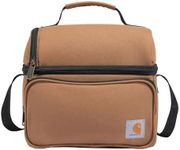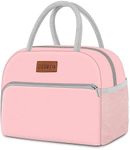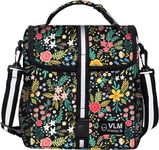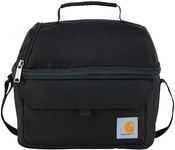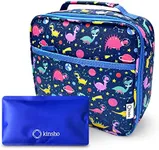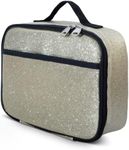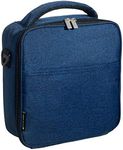Buying Guide for the Best Insulated Lunch Bags
Choosing the right insulated lunch bag can make a big difference in keeping your food fresh and at the right temperature until you're ready to eat. Whether you're packing lunch for work, school, or a picnic, there are several key specifications to consider to ensure you get the best fit for your needs. Here are the main factors to keep in mind when selecting an insulated lunch bag.Insulation QualityInsulation quality determines how well the lunch bag can maintain the temperature of your food. This is important because it helps keep your food safe and enjoyable to eat. Insulation can range from basic foam to high-performance materials like thermal foil. For short trips or mild climates, basic insulation might suffice. For longer durations or extreme temperatures, look for bags with high-quality insulation to ensure your food stays hot or cold as needed. Consider your typical usage scenarios to decide the level of insulation you need.
Size and CapacityThe size and capacity of the lunch bag dictate how much food and drink you can carry. This is crucial for ensuring you have enough space for your meals and any additional items like snacks or drinks. Lunch bags come in various sizes, from small single-meal bags to larger ones that can hold multiple meals or containers. If you usually pack a simple lunch, a smaller bag might be sufficient. If you need to carry multiple meals or larger containers, opt for a bigger size. Think about your typical meal prep and choose a size that accommodates your needs without being too bulky.
Material and DurabilityThe material and durability of the lunch bag affect its longevity and how well it can withstand daily use. This is important for ensuring your lunch bag lasts and protects your food. Common materials include polyester, nylon, and canvas, often with a waterproof or water-resistant lining. For everyday use, a durable material that resists wear and tear is ideal. If you need a bag for outdoor activities, look for one with rugged, water-resistant materials. Consider how often and in what conditions you'll use the bag to choose the right material and durability level.
Ease of CleaningEase of cleaning is a key factor because it affects how easily you can maintain the hygiene of your lunch bag. This is important for keeping your food safe and preventing odors. Some lunch bags have removable liners or are machine washable, making them easier to clean. Others may require hand washing or spot cleaning. If you prefer low-maintenance options, look for bags with easy-to-clean features. Consider how much effort you're willing to put into cleaning and choose a bag that fits your preference.
Portability and ConveniencePortability and convenience features, such as handles, shoulder straps, and additional pockets, affect how easy it is to carry and organize your lunch bag. This is important for making your daily routine more manageable. Some bags have adjustable straps for comfortable carrying, while others include extra compartments for utensils, napkins, or ice packs. If you commute or travel frequently, look for a bag with convenient carrying options and extra storage. Think about your daily habits and choose a bag that offers the right balance of portability and convenience for you.
Design and StyleDesign and style are personal preferences that can make your lunch bag more enjoyable to use. This is important for expressing your personality and ensuring you like carrying your lunch bag. Lunch bags come in a variety of colors, patterns, and shapes, from sleek and professional to fun and whimsical. If you prefer a more professional look, opt for neutral colors and simple designs. If you like to make a statement, choose a bag with bold patterns or bright colors. Consider your personal style and how the design of the bag fits into your daily life.
